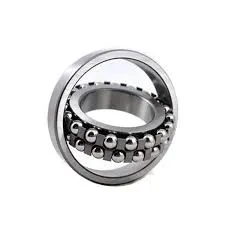
Nov . 01, 2024 02:34 Back to list
Proper Installation Techniques for Spherical Roller Bearings in Machinery Applications
Mounting Spherical Roller Bearings A Comprehensive Guide
Spherical roller bearings are essential components in various industrial applications, providing versatility, durability, and the ability to handle heavy loads and misalignments. Proper mounting of these bearings is crucial to ensuring optimal performance and longevity. This article provides a step-by-step guide to the effective mounting of spherical roller bearings.
Understanding Spherical Roller Bearings
Spherical roller bearings consist of an outer ring with a spherical raceway, inner rings with two rows of rollers, and cages. This unique design allows them to accommodate radial and axial loads in both directions while compensating for shaft misalignments. Consequently, they are widely used in heavy machinery, construction equipment, and wind turbines, among other applications.
Preparation for Mounting
Before mounting spherical roller bearings, it's essential to gather the necessary tools and materials, including
1. Clean Work Environment Ensure that the workspace is clean to prevent contamination of the bearings. 2. Personal Protective Equipment (PPE) Wear gloves and safety glasses. 3. Bearing Press or Hammer A bearing press is preferred for applying even pressure, whereas a soft hammer can be used for lighter applications. 4. Measuring Tools Use tools such as calipers or micrometers to check the bearing and shaft dimensions.
Step-by-Step Mounting Process
1. Inspect the Bearing - Before installation, inspect the bearing for any signs of damage or contamination. Ensure that the bearing is free from dirt or debris.
spherical roller bearing mounting

2. Prepare the Shaft - Clean the shaft thoroughly to remove dirt, oil, and rust. Any foreign substances can affect the performance of the bearing.
3. Heat the Inner Ring (if applicable) - For a snug fit, heat the inner ring of the bearing to expand it slightly. This can be done using an induction heater or an oven at controlled temperatures (typically between 80-100°C). Avoid overheating, which can cause damage.
4. Align the Bearing - Position the bearing onto the shaft. Make sure to align the bearing with the shaft to prevent any undue stress during installation.
5. Apply Force Gradually - Use the bearing press or gently tap the bearing with a soft hammer to install it onto the shaft. Apply force evenly to ensure proper seating of the bearing.
6. Check for Proper Installation - Once the bearing is seated, check for any signs of misalignment. Rotate the bearing to ensure smooth operation without binding.
7. Install the Outer Ring - Next, install the outer ring into the housing. Align it carefully, and apply the same process of gentle pressure to seat the outer ring properly.
Conclusion
Proper mounting of spherical roller bearings is crucial for their performance and lifespan. Following these steps ensures the bearings will function effectively, minimizing downtime and maintenance costs. Regular inspection and maintenance practices will further enhance their durability. By dedicating time and attention to the mounting process, operators can improve the efficiency and reliability of their machinery.
Latest news
-
Premium Deep Groove Ball Bearings | High Speed & Reliability
NewsAug.29,2025
-
Durable Scaffolding Clamps - Secure & Reliable Tube Connectors
NewsAug.28,2025
-
Common Failures in Thrust Ball Bearings and Solutions
NewsAug.22,2025
-
How Tapered Roller Bearings Can Take Shock Loads
NewsAug.22,2025
-
Angular Bearings in High-Precision Spindles
NewsAug.22,2025
-
The Impact of Misalignment on Cylindrical Roller Bearing Performance
NewsAug.22,2025
